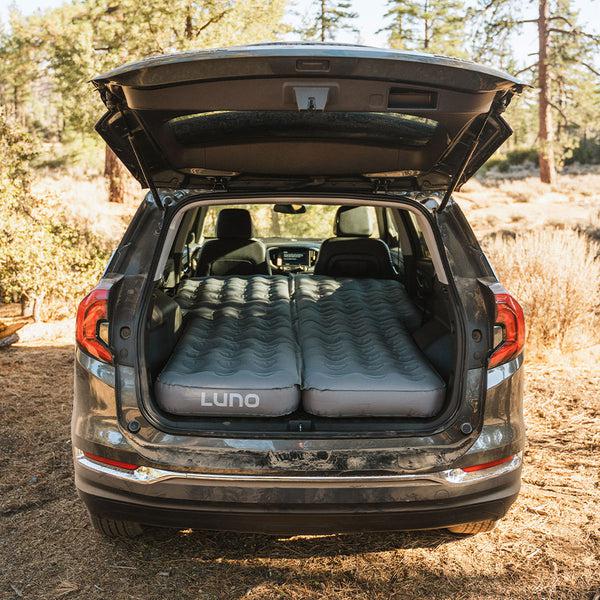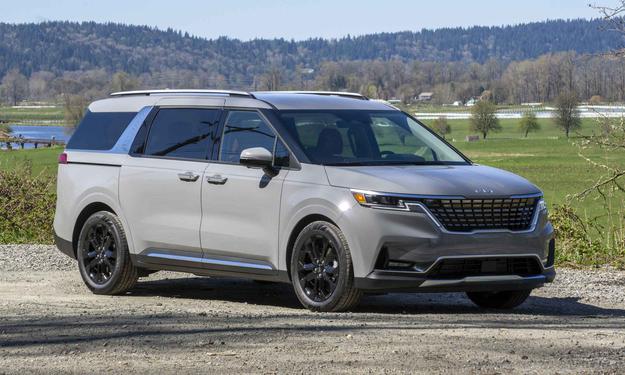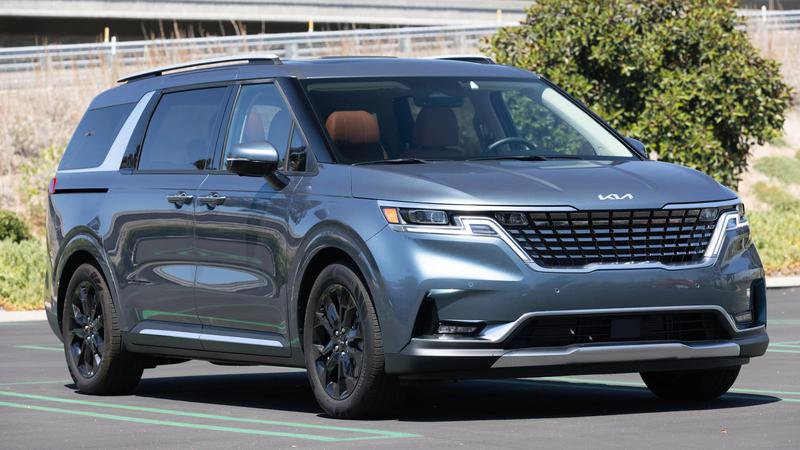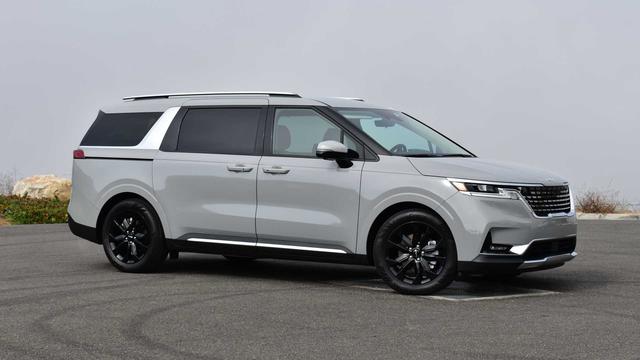Breadcrumb Trail Links
A genuine upgrade, or an attempt to class-up sleeping in your car? Here’s our verdict
Author of the article:Stephanie Wallcraft Publishing date: Oct 27, 2021•October 27, 2021•5 minute read• Join the conversation
Article content
Over the past two summers as COVID-19 has restricted our ability to travel across borders, local road trips and camping have both made a comeback. Here in Canada, we’re exceptionally fortunate that our abundance of both space and natural beauty has made this transition into the great outdoors relatively easy.
Advertisement 2
Story continues belowThis advertisement has not loaded yet, but your article continues below.
Article content
As a result, many Canadian families are trying camping for the first time in a while, or in some cases for the first time altogether. This means buying a full set of gear from scratch and deciding on everything from sleeping bag ratings to tent types and mattresses for staying comfortable through the night, sometimes with zero real-world experience.
We apologize, but this video has failed to load. Try refreshing your browser, or
tap here to see other videos from our team.
For smaller households, I’ve explained how I find using a car instead of a tent to be the way to go for several reasons, including that it protects you better from the elements and keeps you from having to sleep on the ground. In this recent article offering tips for car camping, I explained how to inflate a budget air mattress to fit in the back of an SUV, which is a workable if imperfect solution for overnight comfort.
Advertisement 3
Story continues belowThis advertisement has not loaded yet, but your article continues below.
Article content
1 of 10

All 10 Photos for Gallery
Function Not Available
You may use a different browser or device to view this in full screen.
One company, it turns out, thinks it has created the perfect solution. If Instagram’s algorithm leans you in this direction, you may have seen ads for a company called Luno, which manufactures a variety of accessories for car camping. The company’s signature product is its Air Mattress 2.0, which purports to be more form-fitting to a vehicle’s interior than a rectangular mattress to make car camping a more comfortable experience. There was certainly room for improvement in this regard, but at a cost of $329.99 Canadian, I wasn’t convinced the Luno mattress could be that much better and figured it was probably a glorified way to make people who could afford its price feel better about sleeping in a car.
Recently, a Luno Air Mattress 2.0 arrived on my doorstep, affording me the opportunity to test that theory for myself.
Advertisement 4
Story continues belowThis advertisement has not loaded yet, but your article continues below.
Article content
Luno sells its mattress in a variety of lengths and configurations to fit into everything from smaller hatchbacks to compact or three-row SUVs. The unit I received was sized to fit a 2022 Nissan Pathfinder, which I test drove earlier this summer, but due to some shipping delays it didn’t arrive in time. Instead, I tested it during our recent road trip to the Bruce Peninsula in a 2022 Hyundai Palisade, which offers plenty of interior space and created no obvious difference in how the mattress laid out. This leads me to expect that the longer Air Mattress 2.0 configuration would likely fit inside most three-row SUVs.
More On This Topic
Advertisement 5
Story continues belowThis advertisement has not loaded yet, but your article continues below.
Article content
On unboxing, I discovered that the unit I received comes in three separate parts: a main mattress section, plus two additional cushions that get pushed into the second-row footwells to extend the sleeping surface. A simple powered air pump that runs off a 12-volt connection while the vehicle is in accessory mode is also included. (I’ve been using a manual pump for years and had never gotten around to buying a powered unit, so this upgrade is very exciting.)
To install it, you start by pushing the first-row seats as far forward as they will go. The mattress’s wider section sits on top of the second-row seats, and the narrower section wraps around the wheel wells and continues over the third-row seats toward the back of the vehicle. There are separate valves for inflating and deflating, and the intake valves have a built-in stopper that prevents air from escaping if you need to pause partway through the inflation process. With the included air pump, the entire inflating process takes maybe 30 seconds per section at most.
Advertisement 6
Story continues belowThis advertisement has not loaded yet, but your article continues below.
Article content
All of the valves are located toward the top of the mattress, meaning they end up positioned near the vehicle’s front row. This isn’t my preference: it means you need to stand at the side doors and walk around to the opposite side halfway through, and in either case there’s no protection from the elements. Plus, it’s a stretch to get to the 12-volt connection on the centre console. While it’s true that not every vehicle has a 12-volt plug in the rearmost cargo area, the liftgate shelters the user from sun or rain in that position, and it’s nice when everything can be accomplished from the same place. A second intake valve at the bottom of the mattress would be a welcome upgrade in future models.
Once the larger mattress is inflated, the two cushions can be inflated separately to be pushed into the second-row footwells. The downside of this setup is the storage space that’s lost, but this is far outweighed by the extra length that’s gained on the sleeping surface. I’m 5-foot-7, and I had so much room it was laughable. It’s not inconceivable that someone 6 feet tall or more could be just as comfortable.
Advertisement 7
Story continues belowThis advertisement has not loaded yet, but your article continues below.
Article content
Each side of the main mattress is inflated independently and the two cushions are separate as well, which means each occupant can fully adjust the firmness of their sleeping surface to taste. During our test, the mattress stayed fully inflated through the night without fail. The materials convey a sense of quality and feel built for long-term durability. Luno’s mattresses are 10 centimetres (4 inches) thick, which is at least 7.6 centimetres (3 inches) thinner than the typical budget air mattress available at Canada’s favourite tire store. In the cabin of a three-row SUV, this gain in vertical space really does go a long way in making the interior feel more roomy.
The worst part about breaking something like this out for the first time is that it’s often a pain to get put away again for storage. Luno has that covered, too: the Air Mattress 2.0 comes with a storage bag, and the deflated mattress and cushions roll up to fit into it with little fuss. The bag has a sturdy carrying handle for easy transport, and there’s a built-in pocket that holds a vinyl repair kit so that you always know where to find it when it’s needed.
Advertisement 8
Story continues belowThis advertisement has not loaded yet, but your article continues below.
Article content
There’s little doubt that the Luno Air Mattress 2.0 is a quality product that takes car camping to a new level. The only true question mark is the cost. In Canada, it’s possible to buy as many as five standard queen-size air mattresses for the price of one Luno Air Mattress 2.0, which means as a potential buyer you need to consider that price difference against how often you’re likely to actually use it.
Given that it’s possible to buy a full camping kit for four people for the same amount of money through budget brands, it would be wise to try out car camping with a cheaper mattress first to decide whether you prefer this method to a tent at all. I already know this type of camping is something my daughter and I both enjoy, and I find Luno’s air mattress improves our car camping quality of life significantly. Provided it fits within my budget, I’d consider it well worth the long-term investment.
Share this article in your social network
Trending
Driving.ca's Blind-Spot Monitor
Sign up to receive Driving.ca's Blind-Spot Monitor newsletter on Wednesdays and Saturdays
By clicking on the sign up button you consent to receive the above newsletter from Postmedia Network Inc. You may unsubscribe any time by clicking on the unsubscribe link at the bottom of our emails. Postmedia Network Inc. | 365 Bloor Street East, Toronto, Ontario, M4W 3L4 | 416-383-2300
A welcome email is on its way. If you don't see it, please check your junk folder.
The next issue of Driving.ca's Blind-Spot Monitor will soon be in your inbox.
We encountered an issue signing you up. Please try again
Postmedia is committed to maintaining a lively but civil forum for discussion and encourage all readers to share their views on our articles. Comments may take up to an hour for moderation before appearing on the site. We ask you to keep your comments relevant and respectful. We have enabled email notifications—you will now receive an email if you receive a reply to your comment, there is an update to a comment thread you follow or if a user you follow comments. Visit our Community Guidelines for more information and details on how to adjust your email settings.




